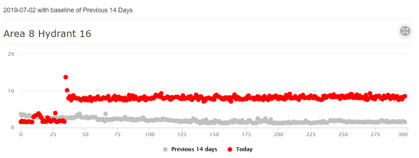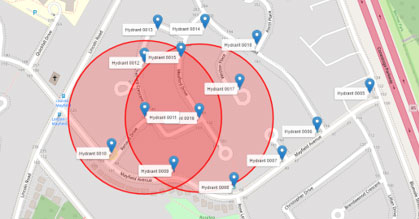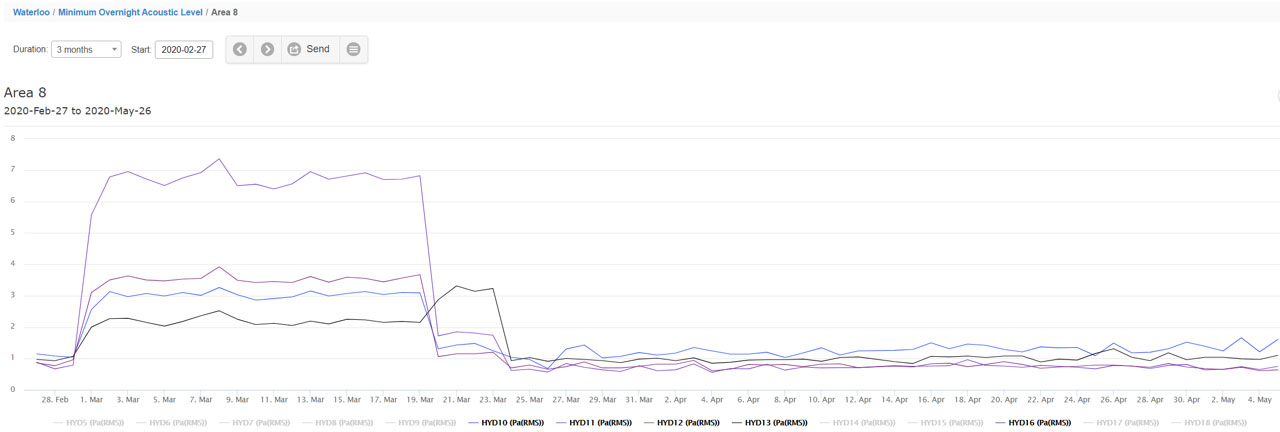Early Notification
Everyday water that has been treated and pumped manages to disappear. Water loss can be attributed to many things including leaks, breaks, water theft or non-metered consumers. With our aging infrastructure one area of growing concern is finding leaks before they become a major break, thus reducing water loss, preserving assets and minimizing costs associated with watermain repairs and potentially road collapse.
Digital Water Solutions proven and patented technology, which uses acoustic monitoring to detect the development of small leaks within a distribution is helping water utilities find leaks that otherwise may go unnoticed for weeks or months. In working with the City of Waterloo two events were found recently that identify the ability of the system to detect leaks that did not surface.
Filling a Swimming Pool
At 2:15am the water utility noticed a distinct noise pattern indicating a leak in the area between two hydrants. After investigating the event the utility found that an individual had been filling their swimming pool with a garden hose. The flow rate detected by the units was ~ 5-6gpm. The sensitivity of the units in identifying a leak condition at such a low flow rate provides evidence that the system has the capability to detect small leaks within the distribution system. The clear jump and somewhat static acoustic levels detected in the water column are clear indication of an ongoing, relatively consistent flow rate.


3 Weeks – Leak Tracking
In the same area the water utility noticed a change in the overnight minimum acoustic levels within the system. They quickly identified that a leak had developed and was ongoing. The leak was found through a leak survey after having been present for almost 3 weeks. The leak was found in the general location identified by the algorithm. When found the crew realized that the leak was going to a storm drain just down the street from where the leak was located.

Given the low flow rate associated with the leak and the travel path to the storm drain this leak could have remained undetected for a considerable period of time leading to an increase in non-revenue water and potentially a larger main break in the future.

Identifying smaller leaks within the distribution system allows the water utility to lower non-revenue water and prevent larger asset failures through quick identification and repair.

